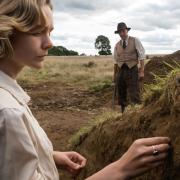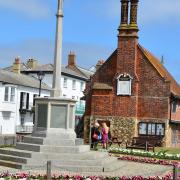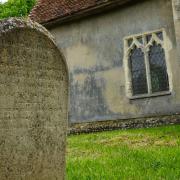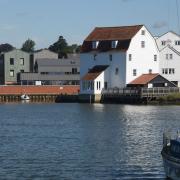Looking after some of Suffolk’s most significant and beautiful historic buildings presents big challenges when the time comes to modernise, as Miranda Campbell, the National Trust’s environmental expert, explains

Looking after some of Suffolk’s most significant and beautiful historic buildings presents big challenges when the time comes to modernise, as Miranda Campbell, the National Trust’s environmental expert, explains
Being as green as possible has never been more important than it is now, both for environmental and financial reasons, and like most organisations the National Trust has energy-saving targets to hit.
But how do we do that, while protecting our heritage and ensuring it remains true to the pages of our history books?
You have to work around historic pipes, earthwork, brickwork and anything else that could be significant. Take, for example, the trust’s work to reduce water consumption.

This story started with a number of people trudging around 1,800 acres at Ickworth in the cold and wet, looking for long forgotten treasure . . . of a sort.
Sometimes buried in soil and sometimes flooded, the artefacts these diligent explorers were looking for were, in fact, Ickworth’s many water meters.
It might not sound glamorous, but this is a daring tale of modern day archaeologists, working from ancient maps and tracking down over three miles of underground water supply pipework made out of four different materials, some of which is over 50 years old.
It’s a narrative of analysing spreadsheets of data, showing water consumption recorded every 15 minutes, by the Anglian Water logger attached to the main incoming meter.
Sheep, horses, cricketers, tenants and 200,000 visitors all consume Ickworth’s water. But at times, over half of all the water coming on to the site was leaking out, thanks to an ageing network, and shrinking or heaving clay soils.
The trust started narrowing down the leaks and spent more than £10,000 replacing and re-routing over a mile of a water main, which ran under a woodland and ploughed field, costing the trust £5,700 each year in leaking water.
Now the average leakage is down to around 13%, so is the tide turning? We’d like reduce the loss even further, but quite often with ageing pipework, when you fix one leak, another pops out somewhere else.
So this year the trust will be installing smart meters on the main branches of the pipework, which should up the anti when it comes to spotting leaks.
We are also trying to reduce our consumption of mains water by restoring the 50,000 litre Edwardian rainwater harvesting system, previously used to launder Lord Bristol’s shirts so they weren’t uncomfortably stiff in what is an area of very hard tap water.
The soft rainwater is also perfect for watering plants, which prefer a more acidic pH. So rainwater harvesting was incorporated into the design of the new plant centre and toilet block, as well as external fittings that are freeze-resistant, low-use taps for the hand wash basins, twin flush WC cisterns and waterless urinals.
Ickworth has also installed a variety of energy and water saving measures in the house, which have helped reduce energy use despite longer opening times and the opening of the servants’ basement to visitors. They include the use of low-energy LED bulbs in chandeliers and rooms on show.
New projects are designed to minimise environmental impact from the start, such as a log boiler to heat the Porter’s Lodge visitor reception, and an air source heat pump for the new plant centre and toilets.
Future improvements include plans for using rainwater to flush toilets in the west wing, draught-proofing, and the installation of a woodchip boiler to provide heat and hot water for Ickworth House, using wood harvested sustainably from the vast estate.



























